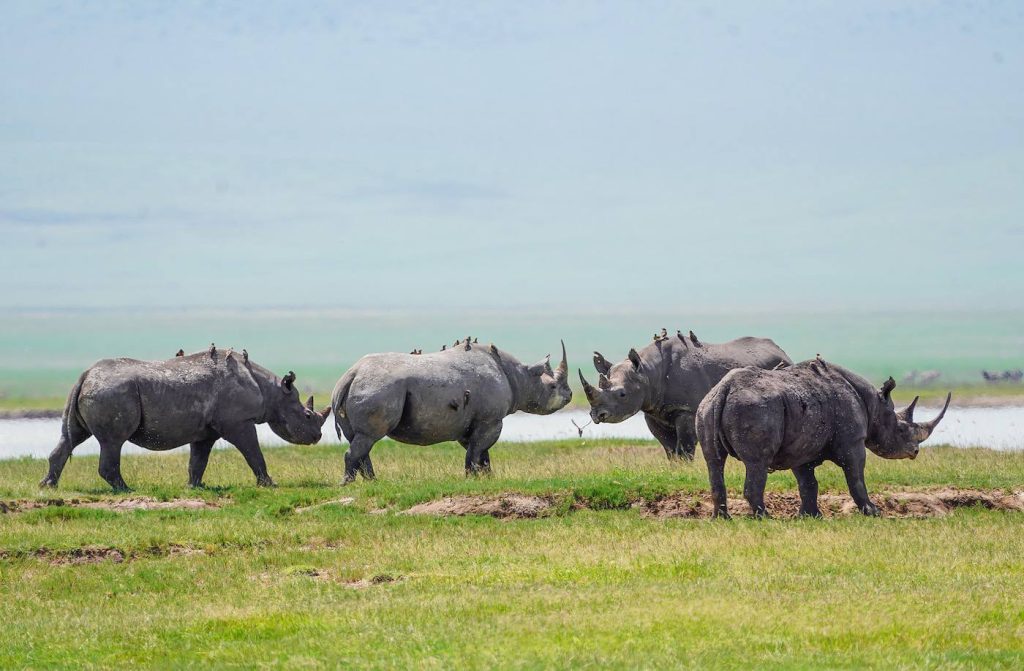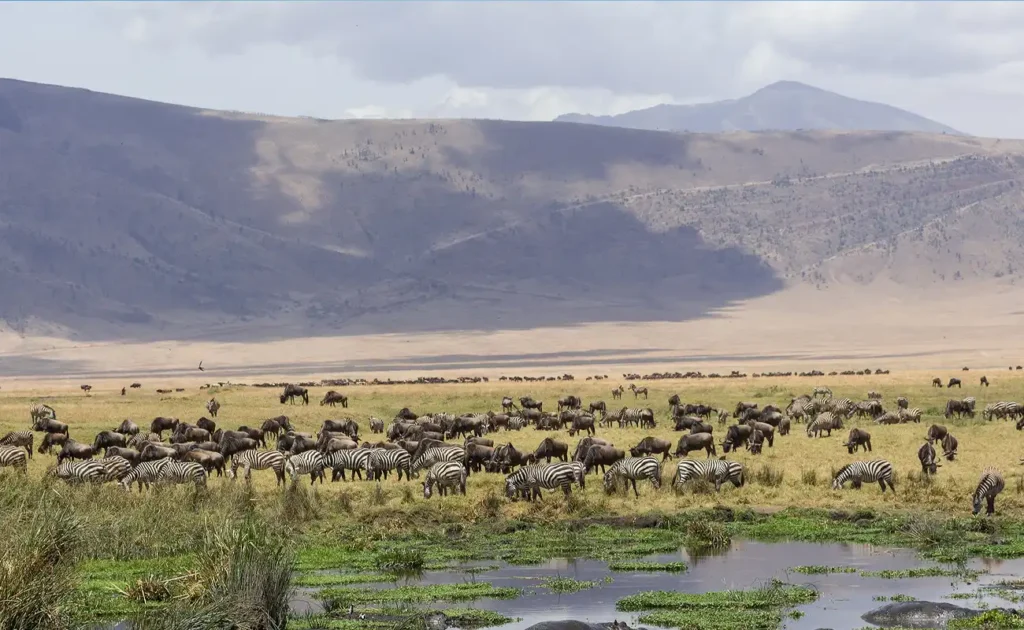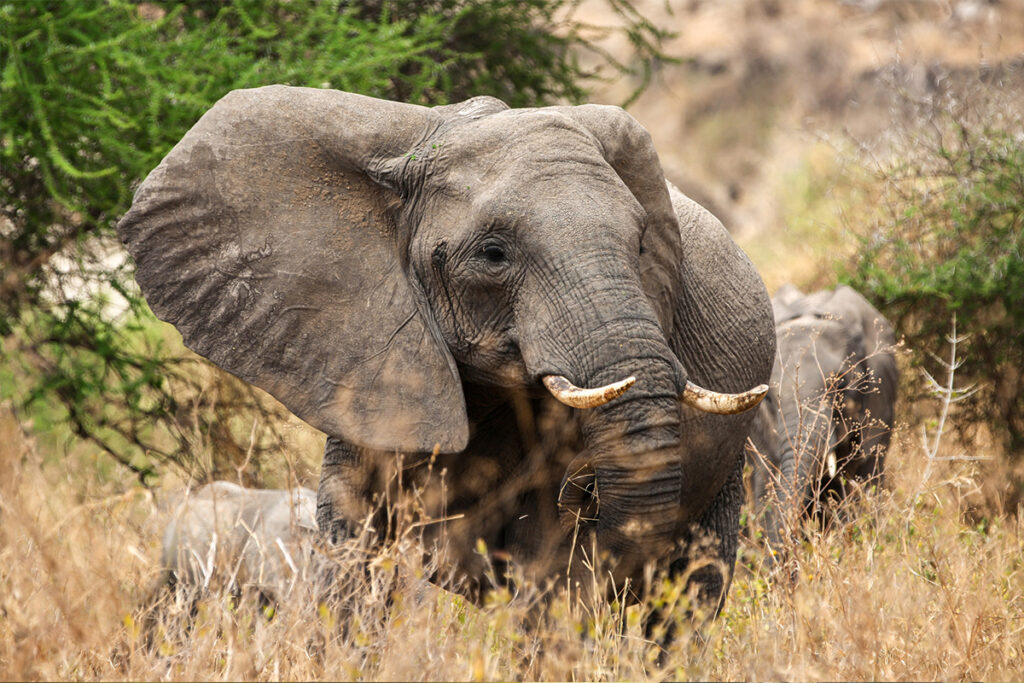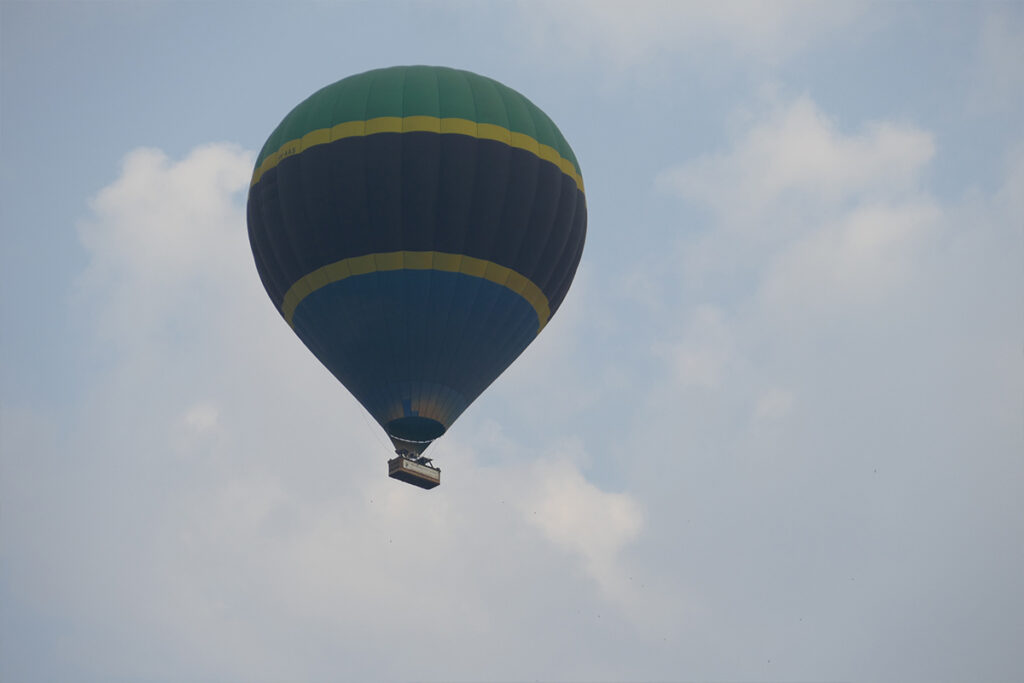Standing majestically against the sprawling backdrop of the Ngorongoro Conservation Area, the rare black rhinos invite awe and admiration. They are the last remnants of an ancient lineage dating back millions of years, inspiring both reverence and an urgent call for conservation. Their elusive presence promises an enthralling experience for those fortunate enough to embark on a Tanzania Rhino Safari.
Embarking on a journey into Ngorongoro isn’t just a safari; it’s a vivid glimpse into history. With around 6,000 black rhinos surviving globally, the area is a crucial stronghold for their protection and preservation. Through tireless conservation efforts and community engagement, Tanzania is paving the way to not just save these rhinos but to thrive alongside them.

Tanzania Rhino Safari: Tracking Rare Rhinos in Ngorongoro
Venturing into the Ngorongoro Conservation Area is like stepping into a world where nature reigns supreme. Known for its stunning landscapes and rich wildlife, this region offers a unique opportunity to spot the rare and majestic black rhinos. These creatures, with their thick skin and imposing horns, are a sight to behold. As they wander through the vast plains, their presence commands respect. With their numbers dwindling globally, seeing them feels more like a privilege than an event.
Tracking these rare rhinos is an adventure filled with anticipation and excitement. Expert guides lead the safaris, sharing their knowledge about the rhinos and the ecosystem. The guides help visitors notice subtle signs of rhino activity, like tracks and dung. Each clue adds to the thrill of possibly spotting one of these magnificent animals. This hands-on experience enriches the understanding of both the rhinos and their habitat.
The Ngorongoro area is not just a haven for rhinos but also a significant site for their conservation. Efforts to protect these endangered animals involve several strategies.
- Anti-poaching patrols
- Community engagement
- Monitoring programs
These efforts ensure a safe environment for the rhinos to live and breed. The success of these measures reflects the commitment to preserving this crucial part of Tanzanian biodiversity.
Embarking on a rhino safari requires preparation to make the most of the adventure. Packing the right gear is essential for comfort and safety during the trip.
- Binoculars for better viewing
- Sturdy boots for treks
- A good camera for capturing moments
Planning ahead helps travelers enjoy the safari while respecting the delicate natural environment. Being mindful of the guidelines enhances the overall experience, making it memorable and rewarding.
Fascinating Facts about the Black Rhinos of Ngorongoro
Black rhinos in Ngorongoro are more than just impressive animals; they are a testament to resilience. Despite facing threats from poaching, they continue to inhabit this rich landscape, thriving against the odds. Their horns, made of keratin, are highly sought after but serve as a symbol of their strength. These magnificent creatures can live up to 40 years in the wild. Their longevity stands as a beacon of hope for conservationists worldwide.
A distinctive feature of the black rhino is its hooked lip. This adaptation helps them grab leaves and twigs from bushes and trees, showing nature’s inventive design. Unlike some of their relatives, black rhinos are shy and solitary. This elusive nature makes spotting one on a safari a truly magical moment. Observing their behaviors reveals the intricate balance of life in Ngorongoro.
Weighing up to 1,400 kilograms, black rhinos are formidable creatures, yet they are surprisingly agile. Their thick skin, while tough, is sensitive to the sun and insects. To protect themselves, they wallow in mud, which acts as a natural sunblock and insect repellent. This ritual is essential for their comfort and health, adding another layer to their fascinating existence. Visitors to Ngorongoro often observe this behavior, sharing the moment’s wonder.
Their sense of smell is incredibly keen, making up for their poor eyesight. This impressive ability allows them to detect danger from far away. Rhinos use scent to mark their territory, ensuring their presence is known. Understanding these behaviors is crucial for study and preservation efforts. Across Ngorongoro, their continued presence plays a vital role in maintaining the ecosystem’s balance.
The Unforgettable Experience of Tracking Rare Rhinos
Tracking rare rhinos in their natural habitat is an adventure like no other. The thrill begins as dawn breaks and the safari vehicles set off into the Ngorongoro Crater. Guided by experienced trackers, visitors learn to look for signs indicating a rhino’s presence. These signs can be subtle, such as fresh dung or tracks on the ground. Spotting these clues builds anticipation and excitement.
The moment you catch sight of a black rhino, it feels like time stands still. Observing these mighty creatures from a safe distance, one can’t help but feel an overwhelming sense of awe. Each movement, whether they are grazing or simply strolling, is a reminder of their majestic nature. The memories of this encounter linger long after the safari ends. Cameras may capture the moment, but the experience is etched in memory.
Engaging with the guides adds depth to the experience. Their extensive knowledge about rhinos and the ecosystem enhances the safari. They share fascinating details about the rhino’s diet, habits, and the challenges they face. The personal stories and insights from these experts provide a richer understanding. This interaction transforms a simple tour into a meaningful learning journey.
Several elements make the tracking experience enjoyable and safe.
- Strict adherence to park regulations
- Use of eco-friendly vehicles
- Respect for the animals’ space
These practices ensure that the wildlife is not stressed or harmed. Visitors are reminded to maintain silence and minimize movement to avoid disturbing the rhinos. Following these guidelines fosters a harmonious relationship with nature, making the adventure truly unforgettable.
The Role of Ngorongoro in Rhino Conservation
Ngorongoro Conservation Area plays a crucial role in preserving black rhinos. This area provides a protected environment where these endangered creatures can thrive. Dedicated conservation efforts aim to increase rhino numbers and ensure their survival for future generations. These strategies involve advanced monitoring techniques and community education. Together, they create a comprehensive plan for rhino conservation.
Anti-poaching measures are a vital part of protecting rhinos. By deploying patrols and surveillance systems, Ngorongoro drastically reduces illegal hunting. The efficient use of technology helps to track and monitor rhinos continuously. This approach keeps poachers at bay, allowing the rhino population to grow safely. Endangered species, particularly rhinos, greatly benefit from these protective actions.
Local communities are integral to the conservation efforts in Ngorongoro. By involving residents in the preservation process, the benefits of conserving wildlife are widely shared. Community programs emphasize sustainable living and the importance of biodiversity. Residents, therefore, become active participants in protecting the rhino habitat. Their cooperation is key to long-term conservation success.
Education and awareness initiatives are important in instilling a conservation mindset. Schools in the area incorporate wildlife education into their curriculum, fostering a generation of wildlife advocates. Engaging young minds ensures that conservation values continue to flourish. Visitors to Ngorongoro are also educated on their impact on the environment. Understanding conservation efforts enhances appreciation for the area’s remarkable biodiversity.
Continuous research and data collection are crucial components of the conservation strategy. Scientists and researchers study rhino behavior and health, contributing valuable insights to preservation plans. This research helps tailor specific interventions to ensure the best outcomes. Collaborations with international conservation bodies expand the resources available. Together, they drive forward groundbreaking efforts to protect these magnificent animals.
Preparations for Embarking on a Tanzania Rhino Safari
Embarking on a Tanzania rhino safari requires thoughtful preparation to ensure a successful trip. Packing the right gear can enhance the experience and maximize comfort.
- Sturdy footwear for rough terrains
- A good quality camera
- Sunscreen and insect repellent
- Binoculars for distant spotting
These essentials help in making the journey enjoyable and safe.
Booking a reliable tour operator is another key step in planning your safari. Reputable operators offer knowledgeable guides who provide valuable insights about the wildlife. These guides ensure safe and ethical practices are followed during the safari. They help enhance the overall experience with their expertise. Choosing the right operator can make a huge difference.
Understanding and respecting local customs and regulations is essential. Visitors should be aware of the rules within the Ngorongoro Conservation Area. Following these guidelines minimizes the impact on the environment. It also ensures the safety of both visitors and the wildlife. Awareness and respect for local practices contribute to a memorable and responsible adventure.
Health precautions are vital before traveling to Tanzania. Getting the necessary vaccinations and travel insurance is crucial. Consult with a travel health specialist to understand the specific needs. Carrying a basic first-aid kit is also recommended. These steps ensure that health issues do not disrupt the safari experience.
Being mentally prepared enhances the safari experience. Understanding the behavior and conservation status of black rhinos adds depth to the adventure. Reading up on the Ngorongoro Crater’s ecosystem can heighten appreciation for the surroundings. The more informed visitors are, the more meaningful their observations become. This knowledge transforms a simple trip into a profound experience.
Proper planning helps in making the most out of a Tanzania rhino safari. Detailed preparation ensures every aspect of the journey is enjoyable and memorable. These steps help create an experience that will be cherished for years. With everything in place, the adventure awaits. The thrill of spotting a rare rhino in the wild is an unparalleled moment.
The Impact of Interested Tourists on Rhino Conservation
Tourists who visit the Ngorongoro Conservation Area have a significant impact on rhino conservation efforts. Their presence helps generate much-needed funds for various conservation projects. Entrance fees and safari bookings contribute directly to protecting habitat and wildlife. This financial support allows for better anti-poaching measures and habitat management. It creates a sustainable way to preserve these magnificent creatures.
In addition to funding, tourists help raise awareness about the plight of rhinos. Visitors often share their experiences, spreading the word about the importance of conservation. Social media posts, travel blogs, and word of mouth can influence a broader audience. This increased awareness can lead to more global support and advocacy for rhino conservation. The ripple effect of one visit can extend far beyond the Ngorongoro area.
Eco-tourism also fosters community involvement in conservation efforts. Local communities benefit economically from tourism, creating an incentive to protect wildlife.
- Job opportunities in guiding
- Hospitality services
- Craft sales
These benefits help build a symbiotic relationship between people and wildlife. When communities see the value in preservation, they become active stewards of the environment.
Tourists’ interest plays a role in driving better conservation policies. Increased visitation highlights the importance of maintaining a healthy ecosystem. Governments and organizations are more likely to implement strong conservation programs. The collective voice of tourists can lead to stricter anti-poaching laws and better resource allocation. Recognizing the importance of these policies ensures lasting positive change.
Responsible tourism practices enhance the impact on conservation. Visitors are encouraged to follow guidelines that minimize their ecological footprint.
- Proper waste disposal
- Maintaining distance from wildlife
- Supporting eco-friendly tour operators
These actions help protect the delicate balance of the ecosystem. By adhering to responsible practices, tourists contribute positively to the environment.
Through their engagement and support, tourists make a vital difference in rhino conservation efforts. Their contributions go beyond financial aid to include raising awareness, supporting local communities, and influencing policy. As long as interest in these remarkable animals remains high, there is hope for their continued survival. Each visit furthers the cause of preserving the majestic black rhinos for future generations.
Key Takeaways
- Ngorongoro is a vital area for rhino conservation efforts.
- Tracking rare black rhinos offers thrilling safari experiences.
- Tourists’ visits support funding for conservation programs.
- Conservation efforts include anti-poaching and community engagement.
- Responsible tourism practices help protect the environment and wildlife.



